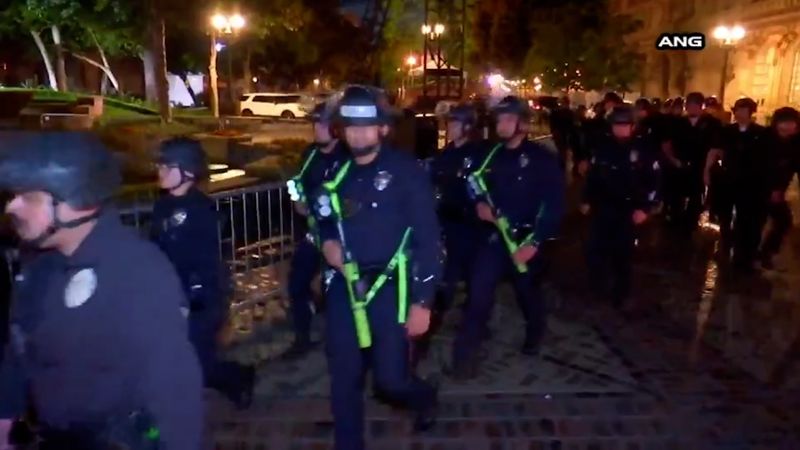I have high hopes for this Friday’s release of “Ant-Man and the Wasp: Quantumania,” because its director, Peyton Reed, has directed one of the most freely imaginative of recent superhero movies, the first “Ant-Man” film, from 2015. As distinctive as that big-budget, studio-tailored franchise film is, it hardly holds a candle in inspiration or thematic depth to several of the movies that he made earlier in his career. His first three features are among the most mercurial dashes from the starting gates of any Hollywood director of the time.
Reed was already a young veteran of television and music videos when he made his first feature, “Bring It On,” released in 2000, an instant classic of high-school cheerleading. It owes a lot to the script, by Jessica Bendinger, which spotlights the ferocity of teen competition and the grim ubiquity of cultural appropriation on which the successes of mainstream (i.e., predominantly white) culture runs. But Reed adds a sharp sense of style and a keenly balanced tone, tinged with melodrama, which showcase the range and depth of its most prominent young actors, Kirsten Dunst and Gabrielle Union.
Yet there’s little in “Bring It On” that foreshadows the controlled explosion of comprehensive creative energy in Reed’s second feature, “Down With Love,” from 2003. It stands as a landmark of cinematic style—and of the substance that’s inherent to its style. “Down with Love” is a film in the cheapest of genres, namely, parody—it’s a pastiche of the tones and elements of three Doris Day/Rock Hudson comedies of the late nineteen-fifties and early sixties, but it’s also an improvement on them. (Needless to say, that’s a rare achievement.) The originals were directed by skilled but unoriginal directors who put their stars in the spotlight and kept the comedy bright and broad. In “Down with Love,” Reed makes a retro live-action cartoon that channels the spirit and the ideas of the greatest Hollywood comedy director of the Day/Hudson era, Frank Tashlin, featuring hair-trigger physical comedy, exaggerated stylization, whimsical camerawork, and a view of the transformative power of mass media.
Renée Zellweger plays an author named Barbara Novak, whose book—also titled “Down with Love”—offers a multi-step program for liberating women from the lopsided demands of romantic relationships with men. Her program primes women to enter the workforce and become financially independent, and to pursue sexual relations solely for pleasure, unhitched from emotional bonds, strictly “à la carte.” Her story is part of the selling point—first-time author, outside the publishing world, a librarian from a small town in Maine—and her editor, Vikki Hiller (Sarah Paulson), seeks to score a publicity coup: a cover story in the leading men’s magazine, Know, by its leading investigative journalist, a big-time, 007-style, British émigré swinger named Catcher Block (Ewan McGregor), “ladies’ man, man’s man, man about town.”
But, with his busy sociosexual schedule, Catcher can’t make time for Barbara. Instead, Vikki scores an even greater coup—getting Judy Garland to sing “Down with Love” (a real song, by Harold Arlen and E. Y. Harburg, from 1937) on “The Ed Sullivan Show”—which turns the book into a best-seller and makes Barbara a celebrity. When she publicly calls out the serial user Catcher, he decides to investigate Barbara, in the hope of proving her a hypocrite who would all too readily fall in love with a man—and he’s going to be that man. Meanwhile, Vikki and the hyper-neurotic publisher of Know, Peter MacMannus (David Hyde Pierce, channelling Tony Randall, who also has a cameo—one of his last screen roles), fall for each other, but the insecure Peter, something of a forty-year-old virgin, turns to his best employee and best friend, Catcher, for advice on surefire seduction, with antic results.
Reed presents this clattery, amped-up game of ruses and deceptions in the form of highly decorative and giddily stylized hyper-unrealism. (The film uses impossibly fake New York geography in a pointed, purposeful way.) The entire city seems candy-coated and color-coördinated—the movie’s palette of décor and costumes runs through blaring primary colors and chiming secondary ones, set among gleaming chrome, hard-edged furnishings, and high-tech modernistic accoutrements to rival the electro-sardonic inconveniences of Jacques Tati’s satirical anti-modern universe. At the center of this dazzling dynamism of industrial design, the movie’s central quartet, of Barbara and Vikki and Catcher and Peter, stand out as exemplars of style and flair. The comedic action is seemingly choreographed with mechanized precision timing in sequences featuring elevators and remote-control gizmos. It’s also literally choreographed, by way of virtually dance-like maneuvers in offices and apartments, juking and synchronized sashaying, which are set to a hep jazz-and-Martini-like space-age score. (Its choral “ba-doo-ba-doo-wah” interjections, once heard, are inextricable earworms.)
This high-toned style is further displayed in the trim and sharp-outlined fashions pressed and starched to the stiffness of armor, the hair sprayed and baked and pomaded to a helmet-like solidity. The cast matches this style with glitzily formal, gleamingly faux-casual manners, which allow the characters to maintain similarly opaque and impenetrable façades, sealing off private lives from public personae. This glossily artificial stylization of personality most clearly embodies the substance of the movie’s style and brings to life Reed’s big idea—the power and the fragility of social masks, the painful effort of sustaining them, and the ordeal of their collapse. “Down with Love” is a comedy of the pre-sixties, of the age before the Age of Aquarius, when culture and science seemed to triumph definitively over nature and human nature, when liberal ideals of rational perfectibility and traditional ones of order converged to sustain those façades until a new generation saw through their deceptions and delusions. (There’s even a winking revision of one of the most famous scenes of romantic movie lies, from “Johnny Guitar.”) The movie culminates in a virtuosic duet for actress and director: Barbara bursts the entire charade with a three-minute monologue—delivered by Zellweger and filmed by Reed in a single high-wire take—which, in effect, condenses an extraordinary and elaborate miniseries’ worth of backstory into a single cream-pie confection that virtually smashes into the screen. With its intellectual slapstick of precisely calibrated creative disorder, the film heralds an era of emotional liberation and self-revelation, in style and substance and movie manners and methods alike.
That new era, the modern times of freedom and its uninhibited exhibitions, is the subject of Reed’s follow-up, the 2006 comedic melodrama “The Break-Up,” an altogether more volatile blend of genres. Its tone is unstable; it’s the story of a young Chicago couple who meet obnoxious, live together, and fall apart—while remaining together in the same spacious condo, for financial reasons, until they can sell it. Vince Vaughn plays Gary Grobowski, a benignly aggressive motormouth who earns his living with his gift of gab, as the guide on a tour bus that’s the main attraction of the small business he co-owns with his two brothers, the industriously nerdy Dennis (Vincent D’Onofrio) and the crude, unfortunately named Lupus (Cole Hauser). Jennifer Aniston plays Brooke Meyers, who manages an art gallery owned by the haughty, unfiltered Marilyn Dean (Judy Davis). Brooke is a college-educated woman from a bourgeois family with deep-rooted ties to powerful institutions; Gary is a man from a working-class family. The couple’s emotional and physical bond seems powerful; the action is centered on the daily routines of a relationship and the cataclysmic results when they break down.







More News
Bernard Hill, who starred in ‘Titanic’ and ‘The Lord of the Rings,’ dies at 79
In ‘The Fall Guy,’ stunts finally get the spotlight
The original ‘Harry Potter’ book cover art is expected to break records at auction